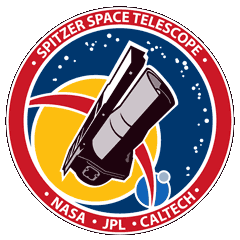Spitzer Space Telescope | Observing In Infrared
Seeing In Infrared
The Spitzer Space Telescope was one of NASA’s ‘Great Observatories’ to observe the universe's early and cold matter in infrared light. However, infrared telescopes must be kept super cold, near zero Kelvin, to record the faint signals! Spitzer was launched aboard a Delta II rocket and placed into an Earth-trailing orbit. The mission was planned to last 5 years but has lasted much longer...
Spitzer Space Telescope Fast Summary Facts
- Type: Space Observatory
- Destination: Earth-trailing, Heliocentric Orbit
- Status: Active
- Launch Location: Cape Canaveral, Florida
- Launch Date: August 25th 2003
- Arrival Date: December 18th 2003
- Mission Duration: Planned 5 years, Extended to 14+ years
Interesting Facts About The Spitzer Spacecraft!
- The Spitzer Space Telescope was the fourth and final of NASA’s ‘Great Observatories’ (along with the Hubble Space Telescope, Chandra X-Ray Observatory and Compton Gamma-Ray Observatory).
- It was named in honour of astronomer Lyman Spitzer who promoted the concept of space-based observatories in the 1940’s.
- The Spitzer's objective was to detect radiation in the infrared part of the electromagnetic spectrum; to observe dim, distant or cool objects that the Earth’s atmosphere would otherwise obscure or absorb.
- Objects of the early universe typically emit in the infrared, so Spitzer has helped to learn how they formed and evolved while also studying dust obscured (and cold) objects that are invisible to other telescopes.
- The spacecraft consists of an 85 cm (2.8 feet) diameter telescope, a sunshade with solar panels and three cryogenically cooled science instruments.
- The Spitzer Space Telescope had to keep its instruments super super cold; close to absolute zero! This was critical as the instruments have to be chilled detect the faint infrared light they receive!
- Passive cooling and helium gas are used as the coolant; once the helium was exhausted (after 5 ½ years) the observatory moved into a ‘warm’ phase of the mission using instruments which still functioned with the slightly warmer temperatures.
- The Spitzer Space Telescope was launched aboard an American Delta II rocket and weighed 950 kilograms (2,095 lbs) when launched.
- The spacecraft was placed into an Earth-trailing orbit near a cooler, benign thermal environment away from the higher temperatures found near Earth (which is very important for infrared instruments).
- Some noteworthy Spitzer Space Telescope observations;
- In 2005 Spitzer directly observed the light from an exoplanet for the first time
- Many exo-planet observations and discoveries such as the famous Earth-like exo-planets around TRAPPIST-1
- Completed a census of nebular with star-forming regions
- Increased our understanding of the structure of the Milky Way
- Shed light on the nature of the most distant and massive galaxies
- The discovery in 2009 of the huge ‘Phoebe ring’ around Saturn
- The overall cost of the mission was USD $720 million! Wow, space is expensive, but a bargain to be able to learn about the universe!
- To learn more about the Spitzer Space Telescope, or find out where it is now, check out the Spitzer JPL website.
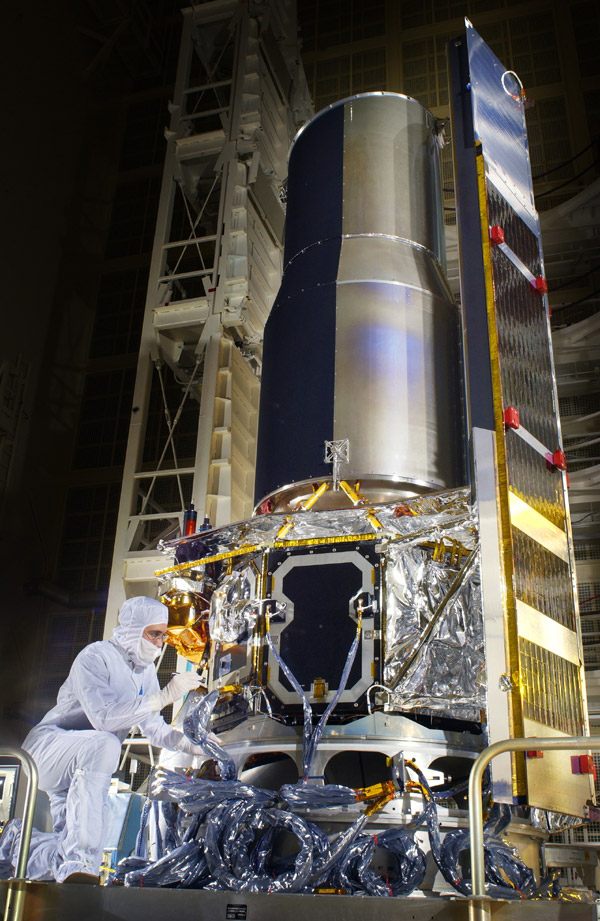
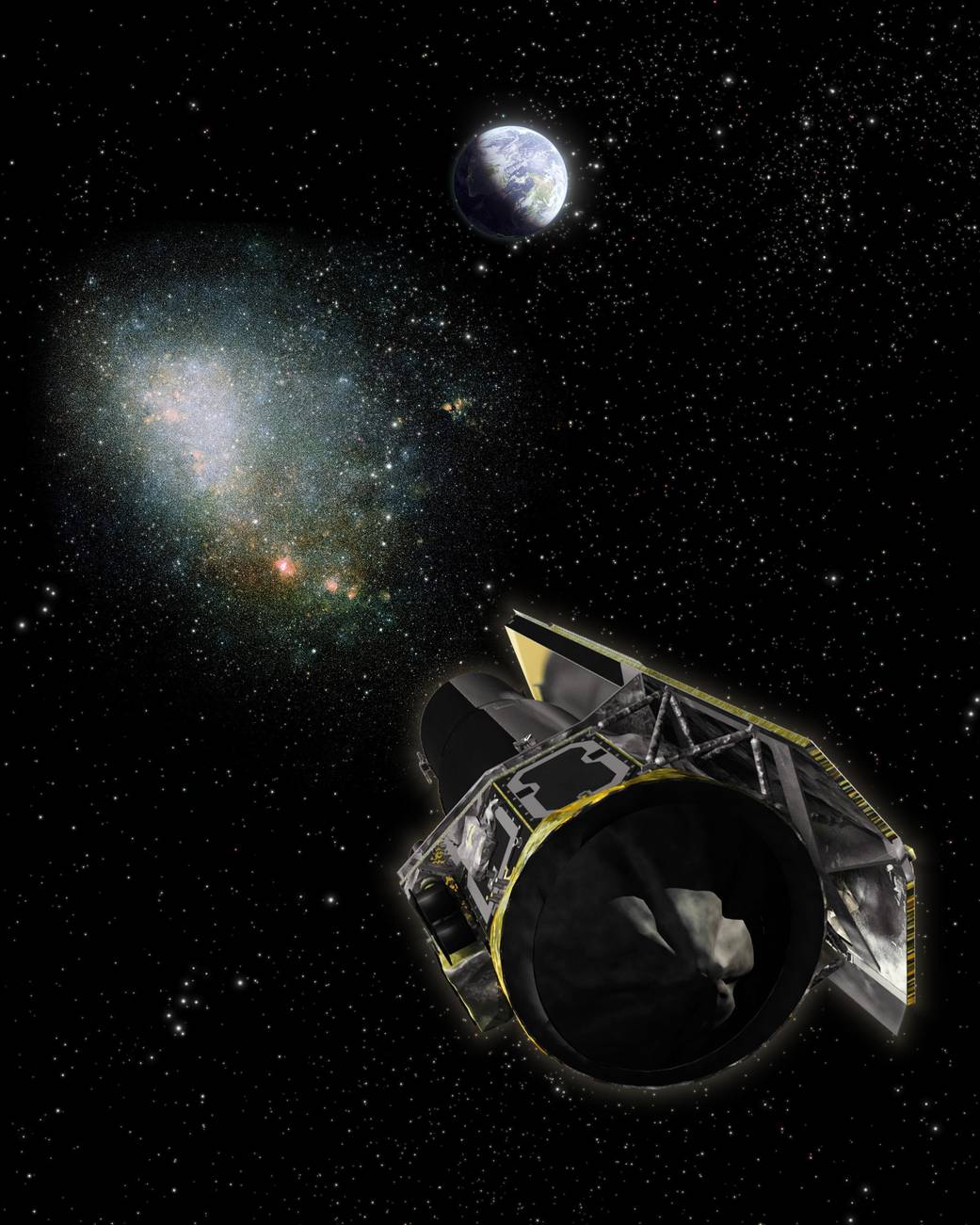
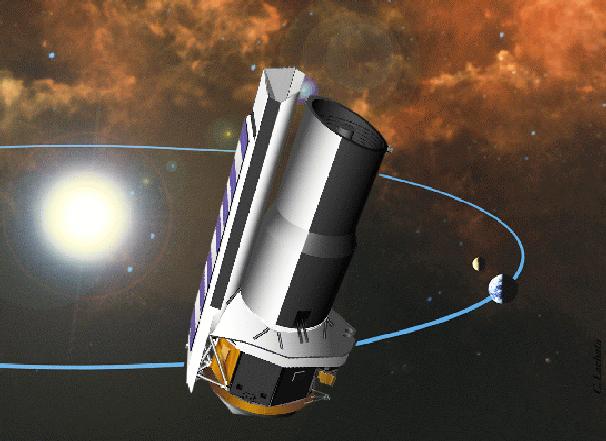
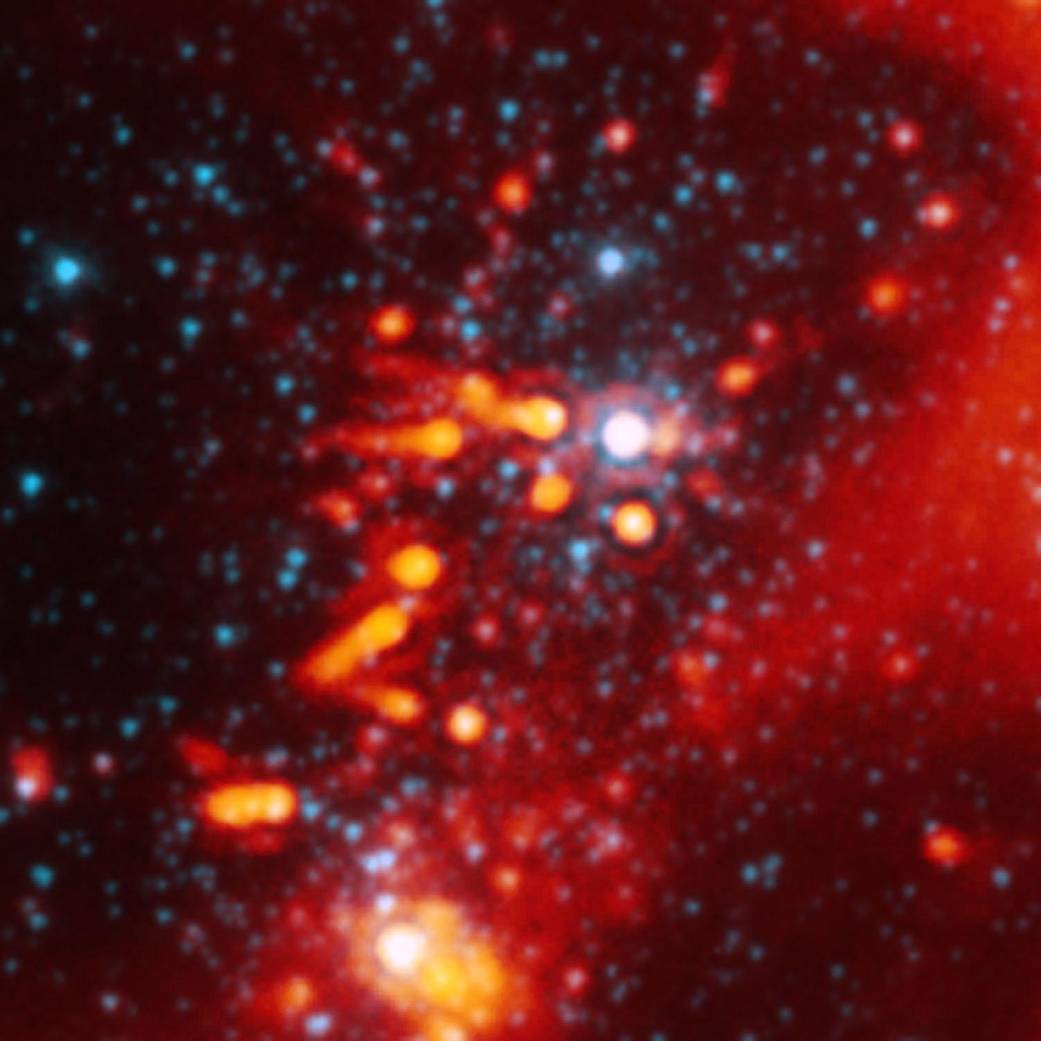
Spitzer Space Telescope
Spitzer Peers Deep
Spitzer Space Telescope
Stellar Blast

